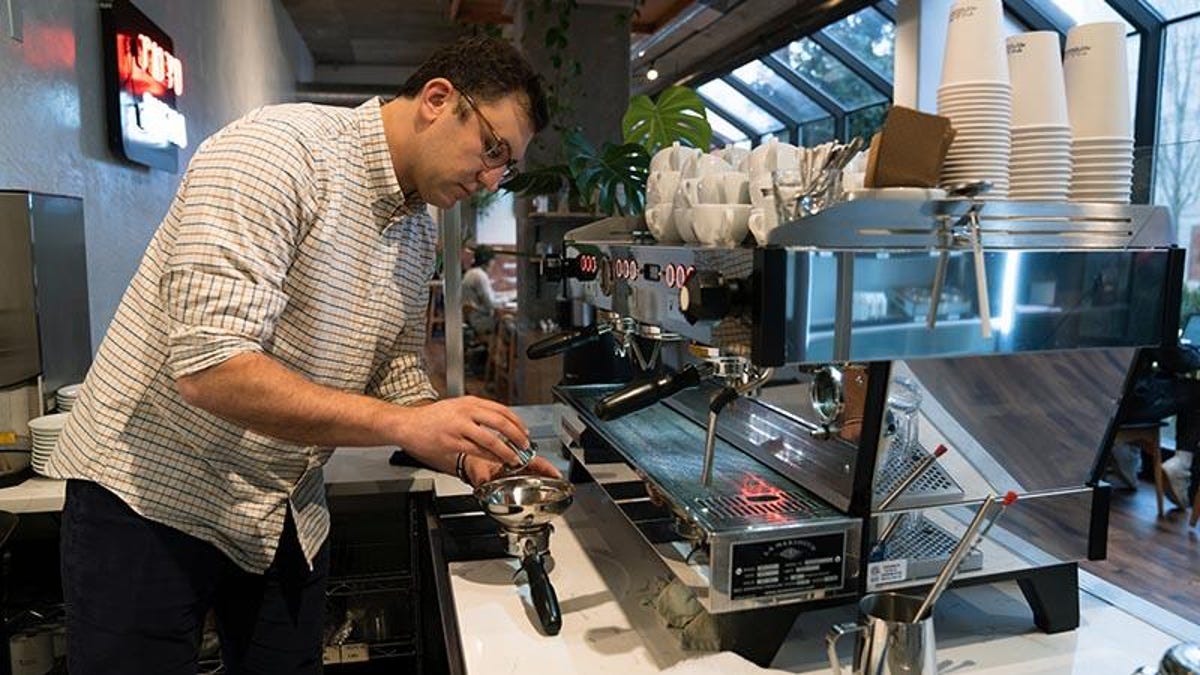Scientists may have the secret to brewing the perfect espresso shot
Researchers come together to brew a shot you can count on.

Chemist Christopher Hendon. Clearly, cups of espresso are periodic on his table.
To consistently create the perfect shot of espresso, new science says, the key could be to get more from less. An international research team that includes chemists, mathematicians, materials scientists and baristas has developed a mathematical model of the espresso brewing process in the real world. The hope is that such a model might provide insights to help baristas serve up potent, palatable shots on the regs.
Using data from the model and from experiments done at real cafes in Australia and Oregon, the team discovered that using less ground coffee and a more coarsely ground bean is the most efficient way to brew a reliably strong, tasty shot.
"The water flows faster through the shallower coffee bed (and) the coarse grind results in a relatively permeable bed, such that water flow and extraction are uniform and predictable," team members Jamie Foster and Chris Hendon explain in the Conversation. "This method leads to fast, bright, sweet and acidic shots that taste the same each time." Foster is a mathematician with the University of Portsmouth; Hendon is a computational chemist with the University of Oregon.
The full team's research, published in the journal Matter, also concludes that brewing with a smaller amount of chunkier grounds could amount to more than a billion dollars in savings each year, just for coffee shops in the US. This comes from reducing the cost of the millions of espresso-based drinks served each year.
Read more: The best coffee grinder you can buy right now
"We want to extract more from the coffee to save money, and be sustainable, but we also want it to taste delicious, not burnt or bitter," Hendon said in a release. "Our method allows us to accomplish that."
The authors say the idea isn't to make all shots of espresso conform to a single flavor profile. They point out that a shot of espresso can contain up to 2,000 different chemicals extracted from the beans and already present in the water.
Balancing all these to get the right flavor may arguably still be more of an art than a science, but the new research still offers a series of procedures for baristas "to help navigate the various flavors available within their coffee," according to Hendon and Foster.
The overall result from the research could be a more predictable espresso shot delivering the right amount of flavor and buzz, and with a little less environmental footprint. Even better, it might also be cheaper.
Originally published Jan. 23, 1:37 p.m. PT.

